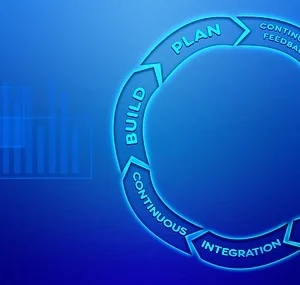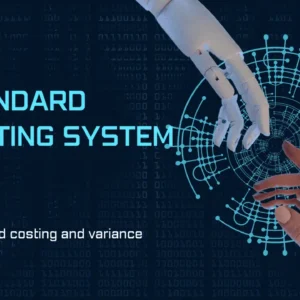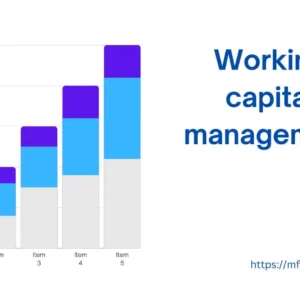What is Performance management?
Performance management is a systematic approach that organizations use to enhance employee productivity, engagement, and overall effectiveness. It involves setting clear performance expectations, regularly assessing individual and team performance, providing constructive feedback, and offering opportunities for growth and development.
By establishing measurable goals and objectives, performance management helps align employee efforts with organizational objectives, promotes accountability, and supports continuous improvement. Effective performance management creates a culture of transparency, open communication, and collaboration, enabling employees to understand their roles, track their progress, and contribute meaningfully to the success of the organization.
Performance management explained
Performance management is a comprehensive process used by organizations to maximize employee productivity and effectiveness. It involves setting clear expectations, monitoring performance, providing feedback, and fostering employee development.
At the heart of performance management is the establishment of specific and measurable goals and objectives that align with the overall strategic objectives of the organization. These goals serve as a framework for evaluating individual and team performance. Regular assessments and evaluations are conducted to measure progress and identify areas for improvement.
Feedback plays a crucial role in performance management. Managers provide constructive feedback to employees, highlighting their strengths and areas for development. This feedback helps individuals understand how their performance contributes to the larger goals of the organization and guides future growth and improvement.
Performance management also includes ongoing coaching and support to help employees enhance their skills and capabilities. This may involve training programs, mentoring, or providing resources and tools necessary for success.
Performance management programs
Performance management programs are systematic frameworks implemented by organizations to manage and improve employee performance. These programs typically involve a series of activities and processes aimed at setting performance expectations, monitoring progress, providing feedback, and supporting employee development. Here are some key components commonly found in performance management programs:
Goal Setting:
Clear and measurable goals are established for employees that align with the organization’s strategic objectives. These goals provide a clear direction for employees and serve as a basis for performance evaluation. Read more about Business goal setting.
Performance Reviews:
Regular assessments and evaluations are conducted to assess employee performance against the established goals. This may involve formal performance reviews, 360-degree feedback, or continuous feedback and coaching sessions.
Feedback and Communication:
Managers provide feedback to employees on their performance, highlighting strengths and areas for improvement. Regular communication channels are established to ensure ongoing dialogue and clarity regarding expectations and progress.
Performance Measurement and Metrics:
Objective measures and key performance indicators (KPIs) are used to evaluate and track performance. These metrics help in identifying areas of success, areas needing improvement, and overall progress toward organizational objectives.
Development and Training:
Performance management programs often include opportunities for employee development and growth. This may involve training programs, skill-building workshops, mentoring, or coaching sessions to enhance employee capabilities.
Recognition and Rewards:
Programs may incorporate recognition and reward systems to acknowledge and celebrate exceptional performance. This can include monetary incentives, promotions, or non-monetary rewards like public recognition or certificates of achievement.
Performance Improvement Plans:
In cases where employees are not meeting performance expectations, performance management programs may include structured improvement plans to help individuals address their deficiencies and enhance their performance.
Performance management cycle
- Planning: This stage involves setting performance expectations and goals for employees. Clear objectives are established that align with the organization’s strategic objectives. These goals serve as the foundation for evaluating performance.
- Monitoring: During this stage, managers regularly monitor and track employee performance. They observe and gather data on individual and team progress toward goals, identifying any deviations or areas of improvement.
- Reviewing: Performance reviews or evaluations are conducted to assess employee performance against the established goals. Feedback is provided to employees, highlighting their strengths and areas for development. This stage allows for a formal assessment and discussion of performance.
- Developing: In this stage, development plans and opportunities are created to support employee growth and improvement. This can include training programs, coaching, mentoring, or other development initiatives tailored to address specific performance gaps.
Best practices
Clear Goal Alignment:
Ensure that performance goals are linked to the organization’s strategic objectives. This alignment helps employees understand how their efforts contribute to the broader goals of the organization.
Regular Feedback and Communication:
Establish a culture of continuous feedback and open communication. Managers should provide timely and constructive feedback to employees, fostering a supportive environment for growth and improvement.
Ongoing Performance Discussions:
Move away from annual performance reviews and embrace regular performance discussions. Regular check-ins allow for real-time feedback, goal adjustments, and addressing concerns promptly.
SMART Goals:
Set SMART (Specific, Measurable, Achievable, Relevant, Time-bound) goals that are clear, realistic, and aligned with employee capabilities. This improves goal clarity, motivation, and accountability.
Employee Involvement:
Involve employees in the goal-setting process and encourage them to contribute their insights and ideas. This empowers employees and increases their commitment to achieving their goals.
Development and Training:
Provide opportunities for employee development and growth. Offer training programs, mentoring, and coaching to enhance skills and competencies, aligning individual development with organizational needs.
Performance Recognition:
Recognize and reward exceptional performance. Acknowledge and appreciate employees who consistently meet or exceed expectations, promoting a positive and motivating work environment.
Performance Improvement Plans:
When performance falls below expectations, implement structured improvement plans. Work closely with employees to identify areas of improvement, provide necessary support, and set achievable targets.
Documentation and Record-Keeping:
Maintain clear and accurate records of performance discussions, goals, feedback, and developmental activities. This ensures consistency and provides a historical reference for future evaluations.
Performance Analytics and Evaluation:
Utilize data and analytics to track and evaluate performance trends, identify patterns, and make informed decisions regarding performance management strategies.
By incorporating these best practices into performance management processes, organizations can foster employee engagement, enhance productivity, and drive continuous improvement throughout the workforce.
How it helps to achieve business objectives
Goal Alignment:
Performance management ensures that individual employee goals are aligned with the broader organizational objectives. By setting clear and specific performance goals, employees understand how their efforts contribute to the overall success of the organization.
Enhanced Performance:
Effective performance management practices, such as regular feedback, coaching, and development opportunities, can improve employee performance. By addressing performance gaps and providing the necessary support and resources, performance management helps employees maximize their potential, leading to increased productivity and efficiency.
Accountability and Measurement:
Performance management establishes a system of accountability. Through regular performance evaluations and metrics, organizations can track and measure progress toward their business objectives. It provides visibility into individual and team performance, enabling timely interventions and adjustments if necessary.
Talent Management and Succession Planning:
Performance management identifies high-performing employees and those with growth potential. By recognizing and developing talent, organizations can build a pipeline of future leaders who can drive business objectives forward. Performance management aids in succession planning by identifying and grooming employees for key roles and responsibilities.
Employee Engagement and Retention:
When employees understand their goals, receive regular feedback, and have growth opportunities, they are more engaged and motivated. Engaged employees are more likely to contribute their best efforts toward achieving business objectives. Additionally, effective performance management can help identify and address employee concerns, leading to improved job satisfaction and reduced turnover.
Continuous Improvement:
Performance management fosters a culture of continuous improvement by regularly reviewing performance, providing feedback, and implementing development plans. By encouraging employees to enhance their skills and capabilities, organizations can drive innovation, adapt to changing market conditions, and stay ahead of the competition.
Advantages of performance management
Goal Alignment:
Performance management ensures that individual employee goals are aligned with the overall objectives of the organization. This alignment helps employees understand their role in contributing to organizational success and fosters a sense of purpose and direction.
Improved Performance:
By setting clear expectations, providing regular feedback, and offering development opportunities, performance management helps improve employee performance. It identifies strengths and areas for improvement, enabling employees to enhance their skills and capabilities, ultimately leading to increased productivity and efficiency.
Enhanced Communication and Feedback:
Performance management facilitates ongoing communication between managers and employees. Regular feedback exchanges allow for discussions on performance, goal progress, and development needs. This open and transparent communication promotes understanding, builds trust, and strengthens the manager-employee relationship.
Employee Development and Growth:
Performance management provides opportunities for employee development and growth. By identifying skill gaps and providing targeted training, coaching, and mentoring, organizations can support employees in acquiring new competencies and advancing their careers. This improves employee satisfaction, engagement, and retention.
Recognition and Rewards:
Effective performance management includes recognition and reward systems that acknowledge and celebrate employees’ achievements and exceptional performance. Recognition programs boost morale, motivation, and job satisfaction, fostering a positive work environment.
Talent Management and Succession Planning:
Performance management helps identify high-potential employees and future leaders within the organization. By assessing performance, skills, and potential, organizations can identify individuals for talent development programs and succession planning. This ensures a pipeline of capable individuals who can assume key roles and responsibilities in the future.
Data-Driven Decision Making:
Performance management generates valuable data and metrics related to individual and team performance. This data provides insights for decision-making regarding talent allocation, resource allocation, training needs, and performance improvement initiatives. It enables organizations to make informed decisions based on objective performance information.
Continuous Improvement and Adaptability:
Performance management fosters a culture of continuous improvement by regularly reviewing performance, setting new goals, and providing ongoing feedback and coaching. This promotes adaptability, innovation, and agility within the organization, enabling it to respond effectively to changing market conditions and business demands.
A practical example
Goal Setting:
The manufacturing firm sets specific performance goals aligned with its strategic objectives. For example, the goal might be to reduce production defects by 10% within the next quarter.
Key Performance Indicators (KPIs):
The firm identifies relevant KPIs to measure performance. In this case, KPIs could include the number of defects per product, the rate of rework, and customer satisfaction ratings.
Performance Monitoring:
Regular monitoring is conducted to track KPIs and identify areas for improvement. Data on defects, rework, and customer feedback are collected and analyzed. This provides insights into the current performance levels and areas requiring attention.
Feedback and Coaching:
Managers provide feedback to employees based on performance data. They address areas of improvement, suggest corrective actions, and guide on enhancing product quality. Coaching sessions may be held to develop specific skills needed to reduce defects.
Training and Development:
The manufacturing firm offers training programs to equip employees with the necessary skills and knowledge to improve their performance. For instance, employees may receive training on quality control techniques, lean manufacturing principles, or equipment operation to minimize defects.
Performance Reviews:
Regular performance reviews are conducted to assess individual and team performance against the established goals and KPIs. These reviews serve as an opportunity to discuss progress, address challenges, and provide constructive feedback on performance.
Recognition and Rewards:
The firm implements a recognition program to acknowledge employees who consistently meet or exceed performance targets. This recognition can be in the form of awards, public recognition, or financial incentives, reinforcing a culture of excellence and motivation.
Continuous Improvement:
The performance management process includes a continuous improvement component. The manufacturing firm encourages employees to contribute ideas and suggestions for process enhancements and product quality improvements. Regular review meetings and brainstorming sessions are held to identify innovative solutions and implement best practices.
Performance Improvement Plans:
If an employee consistently falls short of performance expectations, a performance improvement plan may be implemented. This plan outlines specific actions, support, and timelines to help the employee address performance gaps and improve their overall effectiveness.
Limitations of performance management
Subjectivity and Bias:
Performance assessments and evaluations can be subjective, influenced by personal biases or perceptions of managers. This subjectivity may undermine the fairness and accuracy of performance ratings, leading to inconsistencies and potential dissatisfaction among employees.
Overemphasis on Metrics:
Performance management systems often rely heavily on quantitative metrics and Key Performance Indicators (KPIs). While metrics provide objective data, they may not capture the full range of an employee’s contributions or account for qualitative aspects of performance. Overemphasis on metrics can lead to a narrow focus and may not capture the holistic nature of an employee’s work.
Limited Focus on Development:
Performance management systems often prioritize evaluating past performance rather than focusing on future growth and development. The emphasis on evaluation may overshadow opportunities for continuous learning, skill development, and career progression.
Time and Resource Intensive:
Implementing an effective performance management system requires significant time and resources. Regular performance discussions, goal setting, feedback sessions, and documentation can be time-consuming for both managers and employees, potentially diverting attention from other essential tasks.
Goal Misalignment:
There may be instances where individual or team goals are not well-aligned with the broader strategic objectives of the organization. This misalignment can lead to a lack of clarity and hinder effective performance management efforts.
Emotional Impact:
Performance evaluations and feedback discussions can have emotional consequences for employees. Negative feedback or performance ratings can affect employee morale, motivation, and job satisfaction. Care should be taken to provide feedback in a constructive and supportive manner.
Limited Focus on Contextual Factors:
Performance management systems often focus on individual or team performance without fully considering external factors that may influence results. Factors like resource availability, organizational culture, and external market conditions may impact performance but are not always accounted for in the evaluation process.
Resistance and Lack of Engagement:
Employees may resist or disengage from performance management processes if they perceive them as bureaucratic, punitive, or lacking transparency. It is essential to involve employees in the design and implementation of performance management systems to ensure their buy-in and active participation.





[…] clear communication, accountability, and regular monitoring of progress. It is an effective performance management […]
[…] establishes key performance indicators (KPIs) and metrics to monitor progress and evaluate performance. It provides a basis for measuring […]
[…] BSC provides a structured approach to measure and manage performance. It establishes a set of KPIs that reflect the organization’s goals and helps track progress […]
[…] identify areas of strength and weakness, set realistic goals, and implement strategies to enhance financial performance. It is important to consider the limitations of ratio analysis and complement it with qualitative […]
[…] effectively a company is achieving its key business objectives. KPIs are used to track progress, manage performance, and make informed decisions across various areas such as finance, marketing, operations, and […]
Your point of view caught my eye and was very interesting. Thanks. I have a question for you.